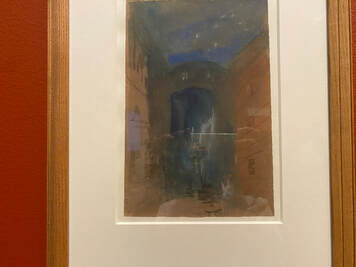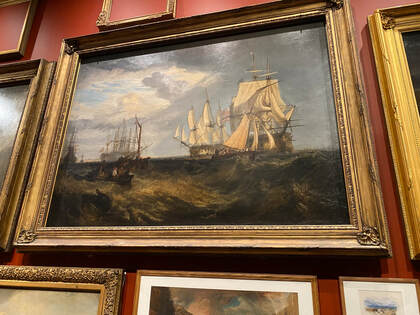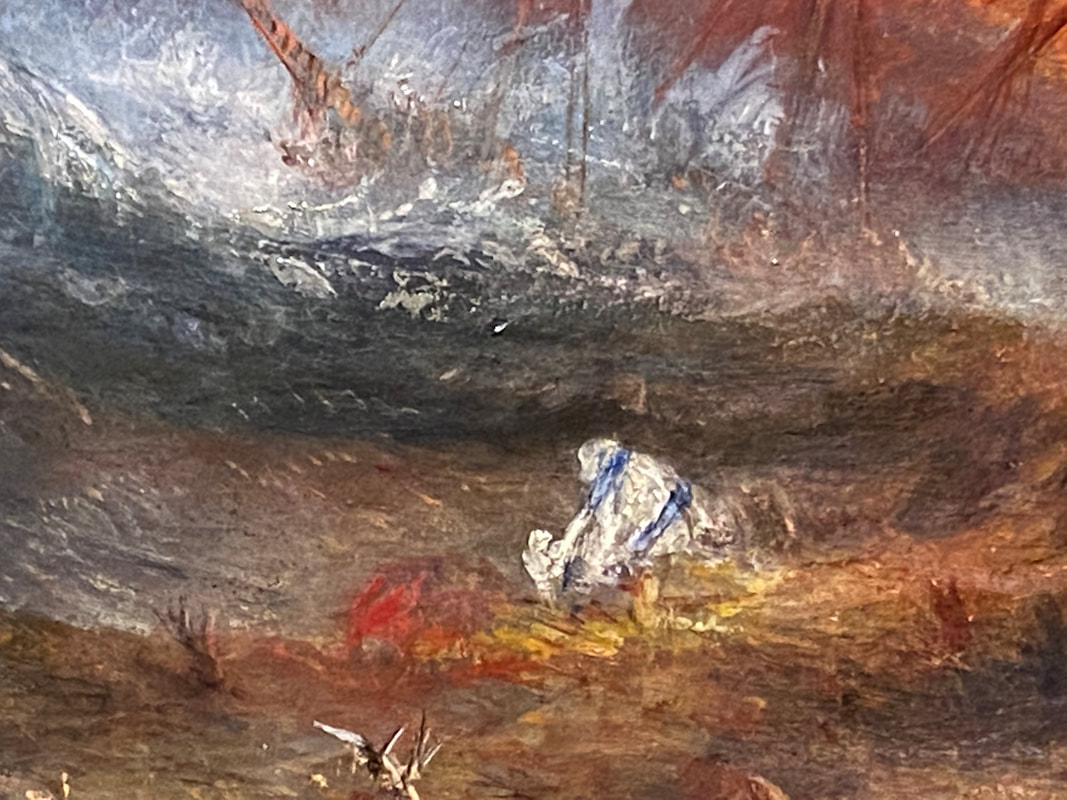J.M.W. Turner(1775-1851) exhibition, Museum of Fine Arts Boston. I went to the exhibition of William Turner, an English painter who best expressed light, the movement of the sea, historical life record and the energy of nature in the 18th century. The exhibition is being held as a special corner at the Fine Art Museum in Boston. Joseph Mallord William Turner RA, known in his time as William Turner, was an English Romantic painter, printmaker and watercolourist. He is known for his expressive colourisations, imaginative landscapes and turbulent, often violent marine paintings. Now I don't need a vaccine pass and even have to wear a mask. For the first time since the pandemic, I went to an art museum comfortably. As I am a person who draws, the small studies and sketchbooks of the painter caught my eye more than the hanging pictures in the first time. An artist's day is to draw a picture every day and to ponder how to express an object or phenomenon with a picture every hour. William Turner, too, used to draw and contemplate and explore new techniques every day. The reason I like William Turner's paintings is that he paid attention to movement and energy. I like paintings that have some kind of energy rather than static beauty. Through his artworks, I can feel the temperature, movement, and emotion. If I look at Turner's sea, it seems as if I can sometimes hear the sound of the cold waves hitting the side of the ships. It's like watching a movie. Sheerness as seen from the Nore(1808). Turner's mastery of marine painting rests in his ability to capture the movement and energy of water. White-cappped waves undulate across the sea's surface. Turner had no formal education. He had a miserable childhood with his father, who was a barber, and his mother, who had a mental illness. However, he was self-taught, studying poetry, classics and Greek mythology. Such liberal arts and knowledge in the humanities can be easily confirmed by looking at the titles of his paintings. The picture below is a painting titled Snowstorm and was painted in 1812. It was painted by imagining the scene of Hannibal and his army crossing the Alps. The best thing about Turner's exhibition was that I was able to compare Turner's oil paintings and watercolors And I could see his delicate touch that made it possible to feel the beauty, mystery, and warmth of light from sun that fills the space with the dramatic effect of light and darkness. After years of research and study, Turner has finally developed his own original painting technique. He did not stop at realistically describing what he saw, but turned the landscape itself into a light-filled expression of his own romantic feelings. My children often go to art galleries with me. Paintings are a good channel for me as a parent to show the world to my children without fear and prejudice. Turner said. “If I paint a blizzard, I don’t paint it so that the viewer understands it. I just want to show what the scene was like.” He wanted to get closer to nature. The nature he felt was not an appearance, but a phenomenon. In 1842 he experienced a storm while visiting the Netherlands. He wanted to feel and experience directly the ever-changing natural phenomena with his whole body in the midst of a storm. He tied himself to a ship's pole and painted the scene of the storm. He had a passionate artistic soul that truly gave me goosebumps. Turner's work was romantic and realistic, heralded Impressionism and profoundly influenced Expressionism. Among the paintings hanging in the exhibition hall, there are works that delicately depict historical sites, but there are also many paintings that are sometimes drawn like abstract paintings like the light sketches below. It seems difficult to fully understand his work. The best thing about visiting an exhibition hall or art museum is that you can see the paintings up close. The pictures taken as a photograph can only be appreciated by the overall long-distance view. If you look at the picture up close physically, it becomes easier to recognize the picture closer Through this exhibition, it was meaningful to be able to directly check the details of the slave ship. Slaves bought from Africa fell ill and died during their long voyages in unfavorable conditions. The vicious slave traders then threw the dead or sick slaves into the sea, leaving only the healthy slaves. The sea looks like a huge hell. Whenever I look at this picture, I always wonder what the white object in the left corner is. Compared to his efforts to capture even the traces of the wind on the canvas, the figures are drawn vaguely like modern abstract paintings. There are no facial expressions of people staring at something, dreaming and looking at them in horror, but I can read their emotions from the vague boundaries. Personally, I think Turner was more obsessed and focused on the energy it shows, rather than just focusing on the beauty of light. I think that is the reason why you can feel the temperature when you look at his light. Venice with the Salute, about 1840-45. The monumental Baroque church of the Salute, with its great dome, dominates the entrance to Venice's Grand Canal. Turner probably focused on this landmark in hopes of finding a buyer. He left the work unfinished, however, barely defining the buildings on either side; water, land, and sky mercy. The extraordinary, shimmering forms evoke the paradox of dense fog on a sunny day. (Reference by interpretation of the exhibition)
0 Comments
Leave a Reply. |
Myungja Anna KohArtist Categories
All
Archives
July 2024
|
Proudly powered by Weebly





























 RSS Feed
RSS Feed